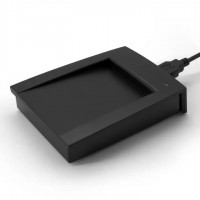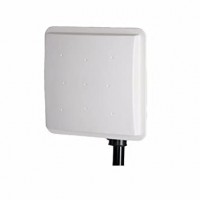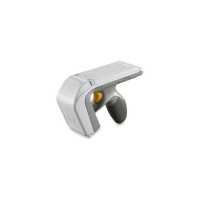No products
New products
-

BlackCopper BC-EGP-10G015-Z
Transform Your Business with BlackCopper BC-EGP-10G015-Z Dual Screen POS...
Rs 0
Catalog
RFID Readers: The Ultimate Guide to Choosing the Right One
RFID readers are essential components of any RFID system, allowing you to read and write data to RFID tags. Choosing the right RFID reader for your needs can be a daunting task, given the vast array of options available. This comprehensive guide will help you navigate the world of RFID ...
RFID Readers: The Ultimate Guide to Choosing the Right One
RFID readers are essential components of any RFID system, allowing you to read and write data to RFID tags. Choosing the right RFID reader for your needs can be a daunting task, given the vast array of options available. This comprehensive guide will help you navigate the world of RFID readers, covering everything from the basics to advanced features and considerations.
What is an RFID Reader?
An RFID reader, also known as an RFID interrogator, is a device that uses radio waves to communicate with RFID tags. It emits radio frequency signals to activate the tag, which then transmits information back to the reader. This information can be anything from a unique product ID to a complex set of data about the tagged item.
Types of RFID Readers
RFID readers come in various forms, each with its own advantages and disadvantages. Here's a breakdown of some common types:
1. Handheld RFID Readers
Handheld readers are portable and ideal for inventory tracking, asset management, and point-of-sale applications. They are typically used for reading data from individual tags and can be equipped with features like Bluetooth connectivity for data transfer.
2. Fixed RFID Readers
Fixed readers are mounted in a stationary location, such as a doorway or a conveyor belt. They are designed for high-volume reading and are often used in access control, warehouse management, and automated production lines.
3. Mobile RFID Readers
Mobile readers are integrated into devices like smartphones, tablets, or laptops, allowing for greater flexibility and convenience. They are commonly used for field data collection, logistics tracking, and mobile payments.
Factors to Consider When Choosing an RFID Reader
Selecting the right RFID reader involves considering several factors, including:
1. Frequency
RFID readers operate at different frequencies, each with its own pros and cons. Common frequencies include:
- Low Frequency (LF): Suitable for short-range applications (up to 1 meter) and environments with metal or liquids.
- High Frequency (HF): Offers longer read ranges (up to 1 meter) and faster read speeds. Commonly used in access control and payment systems.
- Ultra High Frequency (UHF): Provides the longest read ranges (up to 10 meters) and is ideal for inventory management, supply chain tracking, and asset management.
2. Read Range
The read range of an RFID reader is the distance at which it can successfully communicate with an RFID tag. The read range depends on factors like frequency, antenna design, and the environment.
3. Interface
RFID readers can connect to other systems using various interfaces, such as:
- USB: Simple and widely compatible, suitable for connecting to computers.
- Ethernet: Allows for network connectivity and data sharing.
- Bluetooth: Enables wireless communication with mobile devices.
- Serial: Provides a versatile communication protocol.
4. Antenna
The antenna is the component of the RFID reader that transmits and receives radio waves. The antenna type and size affect the reader's read range and coverage area.
5. Power Supply
RFID readers can be powered by various sources, including:
- AC power: Suitable for fixed readers.
- Battery: Ideal for handheld and mobile readers.
- Solar power: Offers a sustainable energy option.
6. Environmental Considerations
The operating environment can impact the performance of an RFID reader. Factors to consider include:
- Temperature: Some readers are designed for extreme temperatures.
- Humidity: Choose a reader that can withstand the intended humidity levels.
- Dust: A ruggedized reader is essential for dusty environments.
Top RFID Reader Brands
Several reputable brands offer high-quality RFID readers, each specializing in different areas. Some of the leading brands include:
- BlackCopper: Known for its innovative and reliable RFID readers across various frequencies and applications.
- Zebra: A renowned provider of enterprise-grade RFID solutions, including readers, tags, and software.
- MB Communication: A trusted name in the RFID industry, offering a wide range of readers and services.
Conclusion
Choosing the right RFID reader is crucial for the success of any RFID system. By carefully considering factors like frequency, read range, interface, antenna, power supply, and environmental considerations, you can select a reader that meets your specific needs and optimizes your RFID deployment.
Remember, seeking professional guidance from an RFID expert can help you navigate the complexities of RFID technology and make informed decisions.
RFID Readers There are 3 products.
-
BlackCopper BCRFUSB
• 125khz EM4100 RFID Proximity ID reader• USB interface,without external power• Read indication LED and Beeper• Main used for: access control ,attendance control,identification.• Purse functionality
Rs 5,720In Stock -
Mid-Range RFID Reader
Integrated, high performance 8dBi circular polarization antennaensure long-range reading & writing and easy installation.
-







